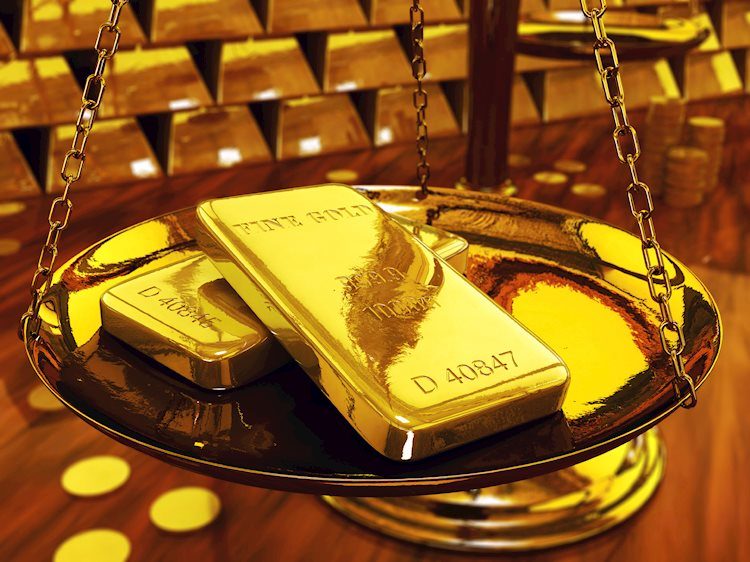Gold prices rose in India on Wednesday, according to data from India’s Multi Commodity Exchange (MCX).
Gold price stood at 61,308 Indian Rupees (INR) per 10 grams, up INR 220 compared with the INR 61,088 it cost on Tuesday.
As for futures contracts, Gold prices increased to INR 61,330 per 10 gms from INR 61,225 per 10 gms.
Prices for Silver futures contracts decreased to INR 73,430 per kg from INR 73,304 per kg.
| Major Indian city | Gold Price |
|---|---|
| Ahmedabad | 63,145 |
| Mumbai | 63,290 |
| New Delhi | 63,430 |
| Chennai | 63,370 |
| Kolkata | 63,460 |
Global Market Movers: Comex Gold price rises further in the Thanksgiving week
- The minutes from the Federal Reserve’s latest meeting revealed officials backing higher for longer interest rates for some time to tame inflation and underpin the US Dollar.
- Market participants, however, seem convinced that the US central bank will keep rates steady rather than hiking and are pricing in the possibility of rate cuts by spring 2024.
- The benchmark 10-year US Treasury bond yield languishes near a two-month low and turns out to be a key factor driving some flows towards the non-yielding yellow metal.
- The National Association of Realtors reported that US Existing Home Sales fell in October to a seasonally adjusted annual rate of 3.79 million units or the lowest level in more than 13 years.
- Israel and Hamas have agreed to a deal for the staggered release of 50 civilians held hostage in Gaza in exchange for Palestinian prisoners and a four-day halt to hostilities.
- The US military conducted discrete, precision strikes against two Iran-backed facilities in Iraq in response to the attacks against US and Coalition forces by Iran and Iran-backed groups.
- The markets reacted little to the latest development as there hasn’t been any major escalation in the Middle East tensions, doing little to influence the safe-haven precious metal.
- Traders now look to the US macro data – Initial Weekly Jobless Claims, Durable Goods Orders and revised Michigan Consumer Sentiment Index – for short-term impetus.
Gold FAQs
Gold has played a key role in human’s history as it has been widely used as a store of value and medium of exchange. Currently, apart from its shine and usage for jewelry, the precious metal is widely seen as a safe-haven asset, meaning that it is considered a good investment during turbulent times. Gold is also widely seen as a hedge against inflation and against depreciating currencies as it doesn’t rely on any specific issuer or government.
Central banks are the biggest Gold holders. In their aim to support their currencies in turbulent times, central banks tend to diversify their reserves and buy Gold to improve the perceived strength of the economy and the currency. High Gold reserves can be a source of trust for a country’s solvency. Central banks added 1,136 tonnes of Gold worth around $70 billion to their reserves in 2022, according to data from the World Gold Council. This is the highest yearly purchase since records began. Central banks from emerging economies such as China, India and Turkey are quickly increasing their Gold reserves.
Gold has an inverse correlation with the US Dollar and US Treasuries, which are both major reserve and safe-haven assets. When the Dollar depreciates, Gold tends to rise, enabling investors and central banks to diversify their assets in turbulent times. Gold is also inversely correlated with risk assets. A rally in the stock market tends to weaken Gold price, while sell-offs in riskier markets tend to favor the precious metal.
The price can move due to a wide range of factors. Geopolitical instability or fears of a deep recession can quickly make Gold price escalate due to its safe-haven status. As a yield-less asset, Gold tends to rise with lower interest rates, while higher cost of money usually weighs down on the yellow metal. Still, most moves depend on how the US Dollar (USD) behaves as the asset is priced in dollars (XAU/USD). A strong Dollar tends to keep the price of Gold controlled, whereas a weaker Dollar is likely to push Gold prices up.
